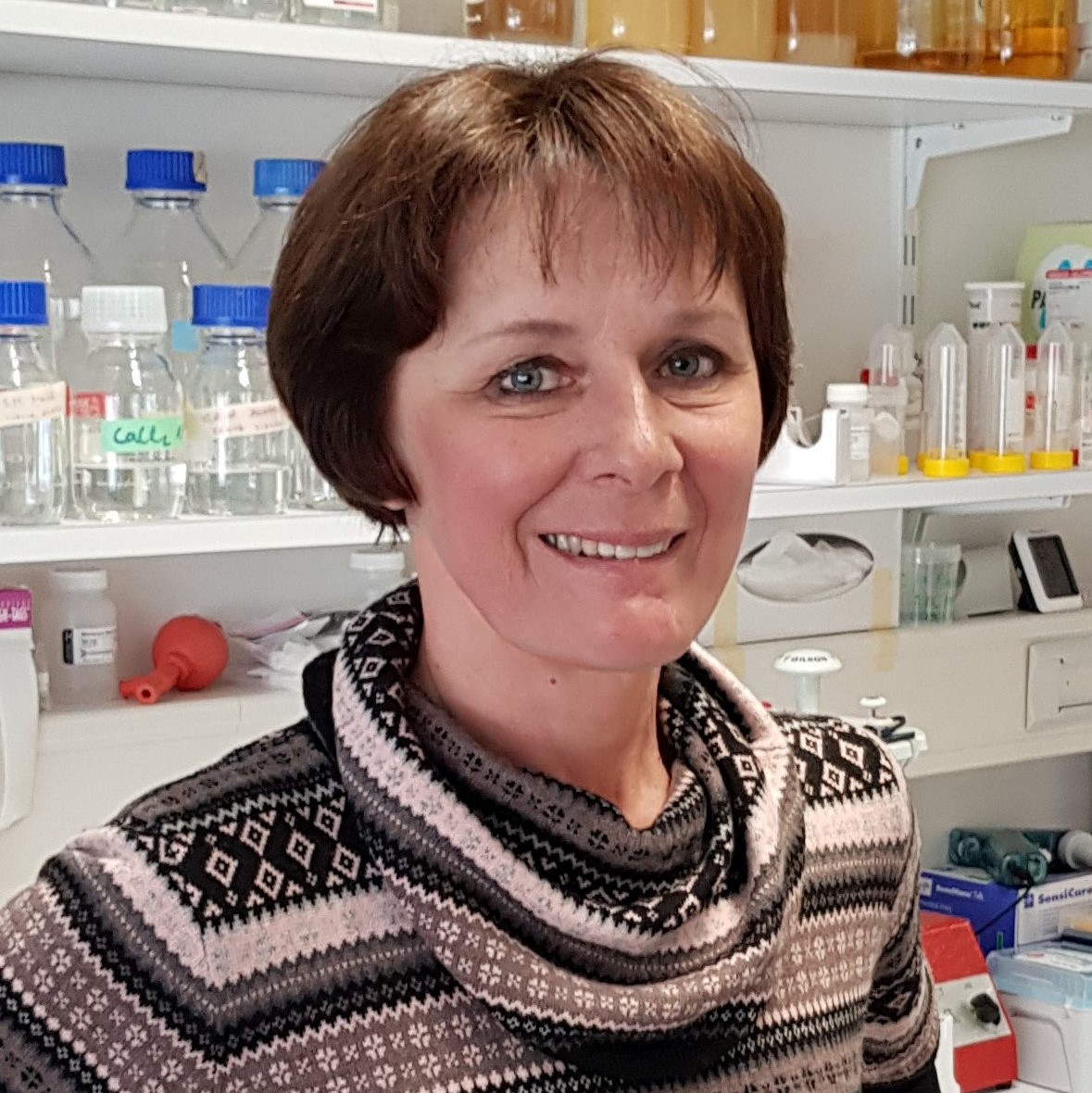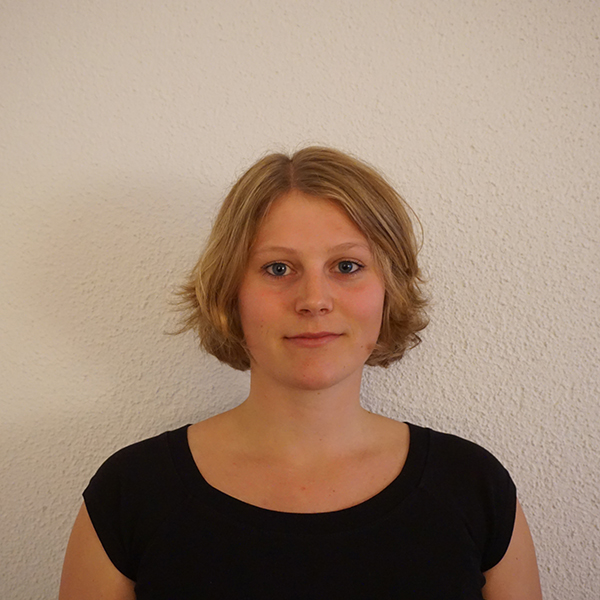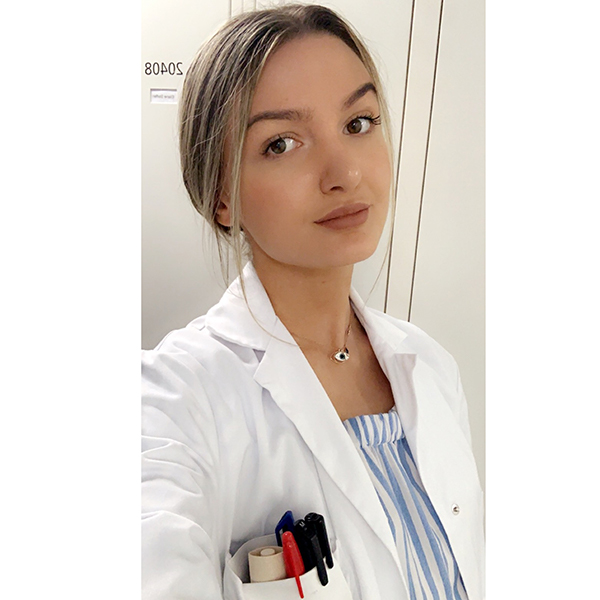Team Biology
Team Biology is investigating the molecular mechanisms of lower urinary tract dysfunction. We combine the transcriptome analysis of clinical material with cell-based and animal models to develop novel diagnostic and therapeutic approaches to treat LUTD.
Michelle von Siebenthal
PHD Student
From 2011-2017 Michelle completed the Bachelor’s and Master’s Degree in Health Science and Technology with specialization in Neuroscience at ETH Zurich. Following a technician position at the Department of Neuroscience, University of Fribourg, she started her PhD studies in Cell Biology in the Functional Urology Group, University of Bern, in 2018. Michelle has developed innovative methodology for urodynamic examination in live unanesthetized mice, in agreement with the 3R principles of animal experimentation. She has also established protocols for EMG measurements of urethral sphincter activity in mice. Her PhD thesis dealing with the mouse models of bladder outlet obstruction and spinal cord injury-induced neurogenic LUTD is well underway.
Akshay
PhD student
Akshay is a dedicated bioinformatician with a strong
academic background and a passion for deciphering complex
biological data. His expertise lies in software
development, Machine Learning (ML), Deep Learning (DL),
and analyzing various omics datasets, including
bulk/scRNA-Seq, scATAC-Seq, Spatial Transcriptomics, and
more.
With a Bachelor's degree in Bioinformatics from Panjab
University, India, and a Master's degree in Bioinformatics
from the University of Saarland, Germany, Akshay is
currently pursuing a PhD in Bioinformatics at the
University of Bern, Switzerland. His research focuses on
understanding molecular drivers of bladder remodeling in
Lower Urinary Tract Dysfunction (LUTD) through integrated
analysis of omics data from patient biopsies and animal
models, using advanced statistical and ML methods.
In addition to his research, Akshay has contributed to the
field by developing various bioinformatics tools, such as
Mlme,
MLcps,
SpheroScan,
ShinyMultiome.UiO
and
ShinyArchr.UiO
reflecting his commitment to advancing scientific
research.
His current focus involves employing
state-of-the-art bioinformatics and ML/DL techniques for
multi-omics data integration to identify potential LUTD
biomarkers.
Chaimae Bahou
PHD Student
Chaimae earned a Master's degree in Life Sciences Engineering with a specialization in cellular and molecular biology in 2023, and a Bachelor's degree in Life Sciences Engineering in 2020, both from EPFL in Lausanne, Switzerland. She has experience working as a full-time trainee at AC Immune in Switzerland, where she collaborated with chemists and various teams to profile SME compounds based on their in vitro ADME properties. She also worked as a full-time intern at the Laboratory of Professor Hilal A. Lashuel, where she developed and characterized antibodies used in assessing neuronal models of Parkinson's Disease. In addition, Chaimae conducted protein analysis research for her Bachelor's project in the UPSIM Laboratory at EPFL, focusing on intracellular signaling involved in P-bodies in S.pombe. Chaimae has joined the lab as a PhD student and pursue research in exploring the detrusor overactivity in Multiple Sclerosis.
Pragya Nagar
PHD Student
Pragya holds a Master of Science degree in Biomedical Engineering from the University of Basel in Switzerland, where she focused on generating and characterizing a new screening platform for deorphanization of G-protein coupled receptors for her thesis project (2020- 2023). Pragya also earned a Bachelor of Technology degree in Biotechnology from Delhi Technological University in India (2015- 2019). Pragya has additional research experience as a Student Assistant at ETH Zürich's Department of Biosystems Science and Engineering in Basel, Switzerland. Her work included screening for orphan G-protein coupled receptors with CRISPR perturbations, involving skills such as molecular cloning, qPCR, siRNA knockdown, luminescence assay, animal cell culture, and transfection. She joined the Functional Urology Group, University of Bern, in 2023 for her PhD studies. Pragya will research Detrusor Overactivity (DO) following Spinal Cord Injury in mice and humans. She will investigate the potential link between mitochondrial damage, increased Reactive Oxygen Species (ROS) levels, PARP-1 signaling activation, and NAD+ depletion in different cell types of the bladder wall. Her research will contribute to understanding of the triggers of DO and developing targeted therapies to prevent bladder overactivity.
Mustafa Besic
Lab Technician
Mustafa’s current position as Biomedical Scientist in our research group implies working closely with the other group members and independent performance of experiments. His areas of expertise are molecular biology techniques (real-time quantitative PCR, molecular cloning, protein and nucleic acid analysis), cell culture and tissue histology. Additionally, Mustafa is an expert of exosome isolation and nanoparticle tracking analysis. He is in charge of the NanoSight NS300 instrument in the FCS facility of DBMR. Since 2020 he holds LTK1 animal experimentation license and is involved in animal experiments including surgery and post-op care of mice. In his function as laboratory manager, he additionally takes care of all the organization tasks including ordering, repairs and maintenances of the lab equipment.
Blenda Gashi
Medi trainee student
Blenda is a medi student training to become a biomedical scientist. The medi school students study the analytic methodologies in the different specialties of laboratory medicine such as hematology, microbiology, histology, chemistry etc. Currently Blenda is working in our lab and writes her diploma thesis, in which she focuses on morphological changes of mouse bladders after a spinal cord injury.
Latest Projects
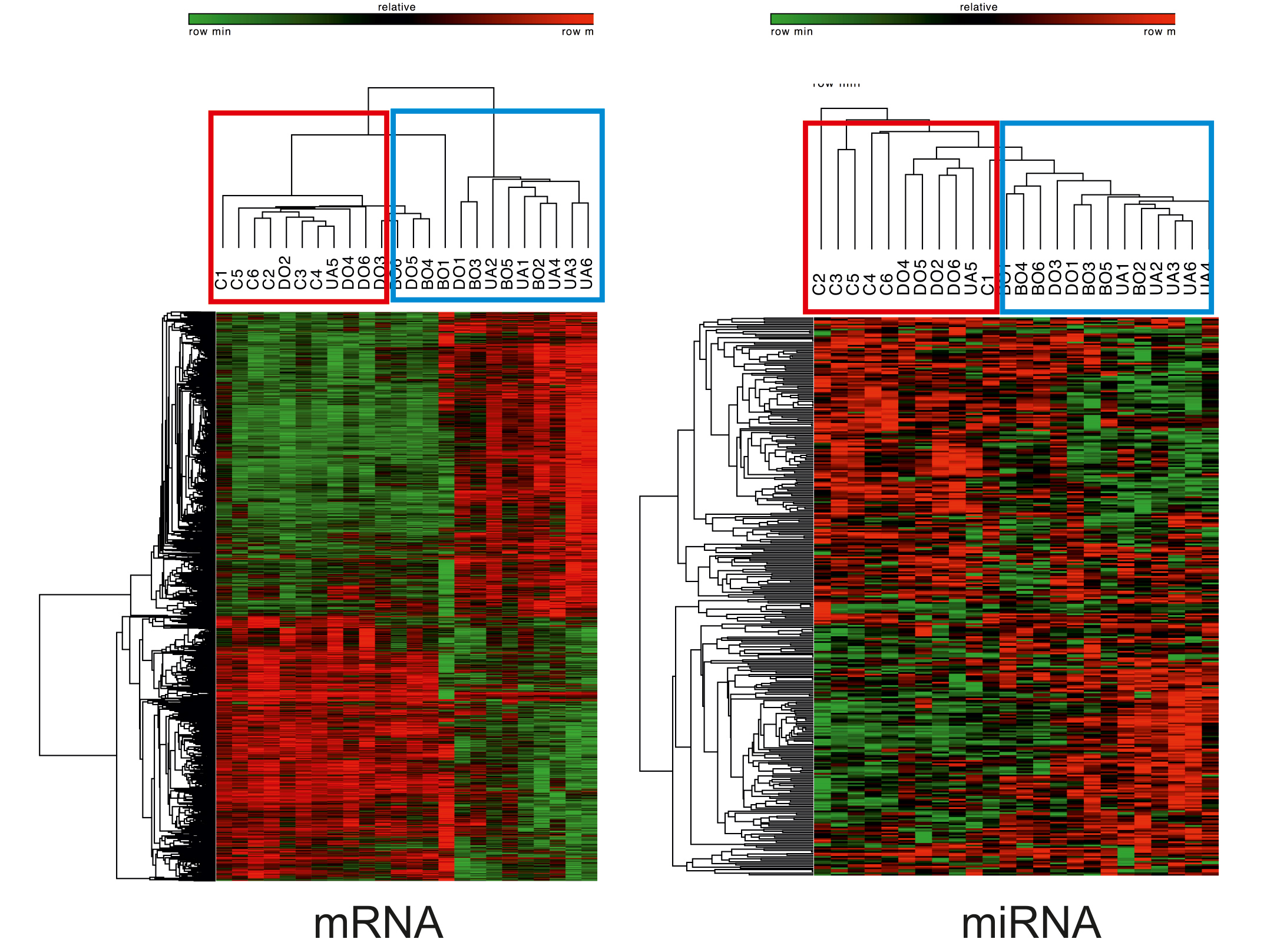
Molecular drivers of bladder remodelling in lower urinary tract dysfunction identified through integrated data analysis of patients’ biopsies and animal models
Our Functional Urology Group investigates the molecular mechanisms underlying the functional and morphological changes in the bladder during LUTD. Our comprehensive transcriptome sequencing, the first of its kind, of human bladder biopsy samples from patients with benign prostatic obstruction revealed activation of immune response and proliferative signalling pathways... Read More

Targeting PARP-1 Signalling: a novel therapeutic approach for detrusor overactivity
Prerequisite for normal storage and voiding functions of the urinary bladder is a coordinated interaction between the muscle components of the bladder wall (detrusor) and its outlet (urethra and sphincter). Lower urinary tract dysfunction can be caused by bladder outlet obstruction and neurological diseases including spinal cord injury and multiple sclerosis. Detrusor (bladder muscle) overactivity (DO) often constitutes a part of an overactive bladder syndrome, greatly reducing the patients’ quality of life... Read More
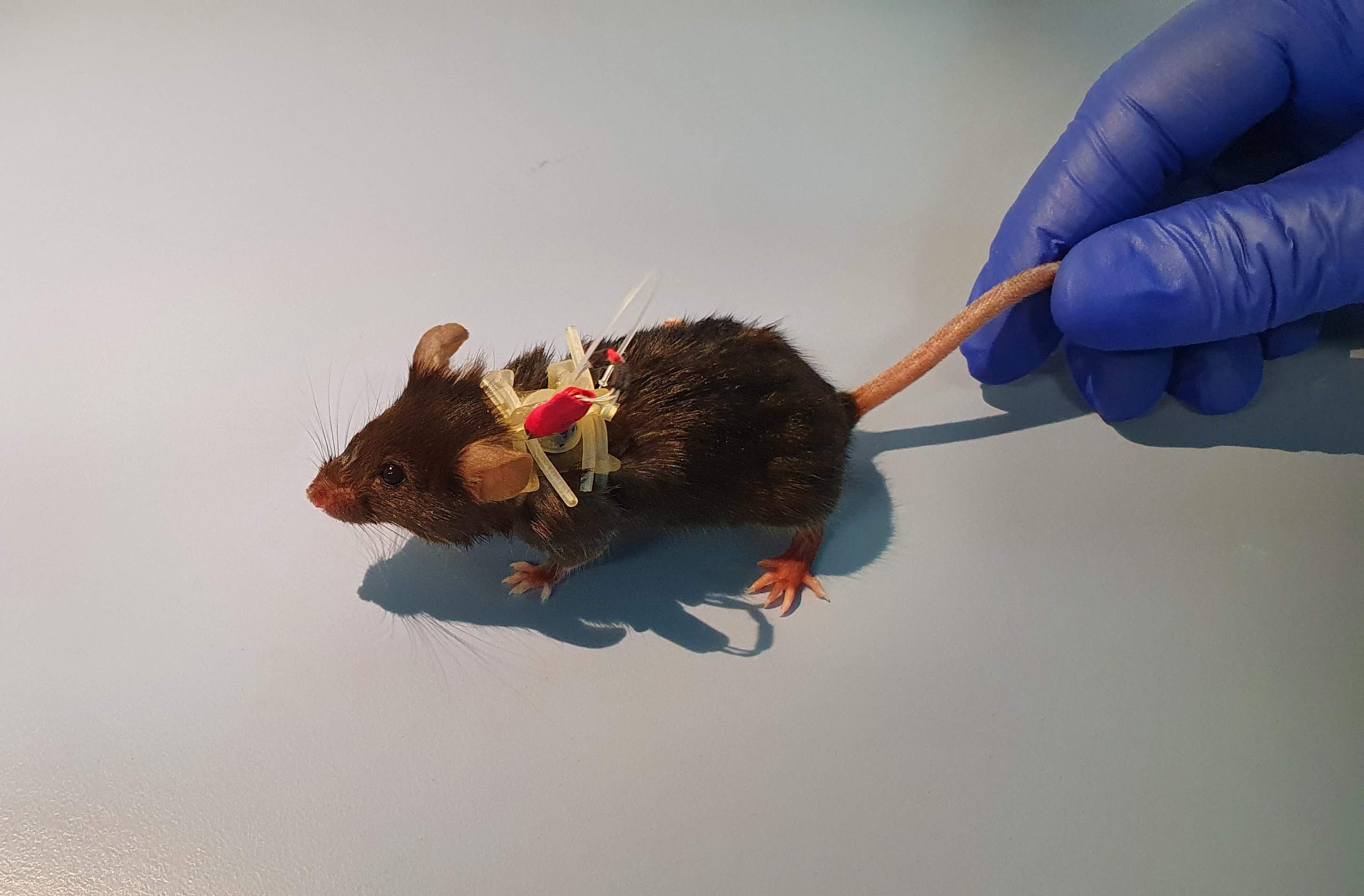
A novel mouse urodynamic model for repeated detrusor pressure and external urethral sphincter activity measurements to study obstructed and neurogenic bladder dysfunction
Lower urinary tract dysfunction (LUTD) can develop as the result of bladder outlet obstruction (BOO) and in neurological diseases including spinal cord injury (SCI). A dangerous and potentially life threatening form of neurogenic LUTD is detrusor sphincter dyssynergia, where the detrusor and sphincter muscle contractions are uncoordinated, leading to high pressure voiding, detrusor overactivity and development of residual urine... Read More
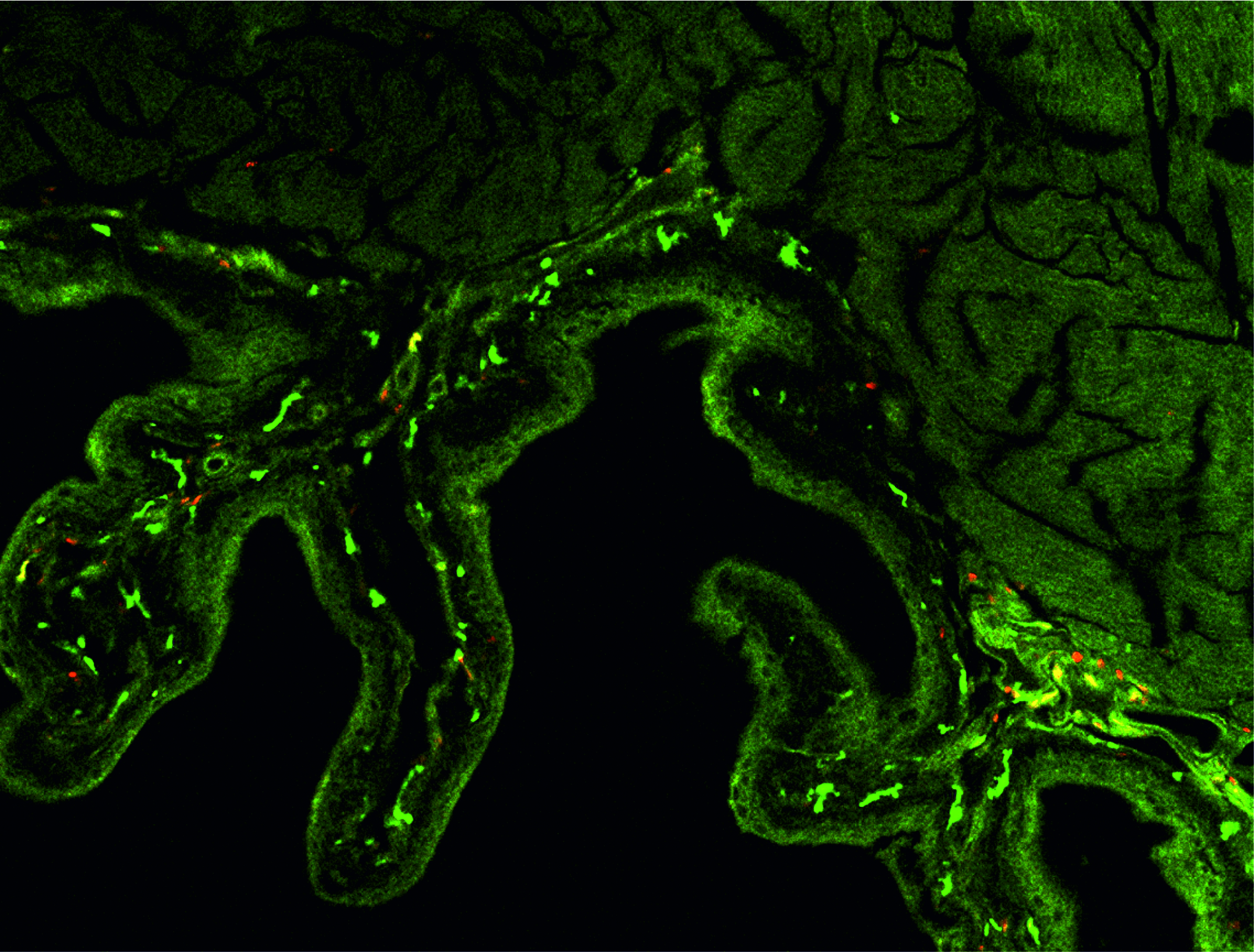
Comparative transcriptome and proteome analysis of SCI-induced neurogenic LUTD in humans and rats
Our Functional Urology Group investigates the molecular mechanisms underlying the functional and morphological changes in the bladder during LUTD. Our comprehensive transcriptome sequencing, the first of its kind, of human bladder biopsy samples from patients with benign prostatic obstruction revealed activation of immune response and proliferative signalling pathways... Read More
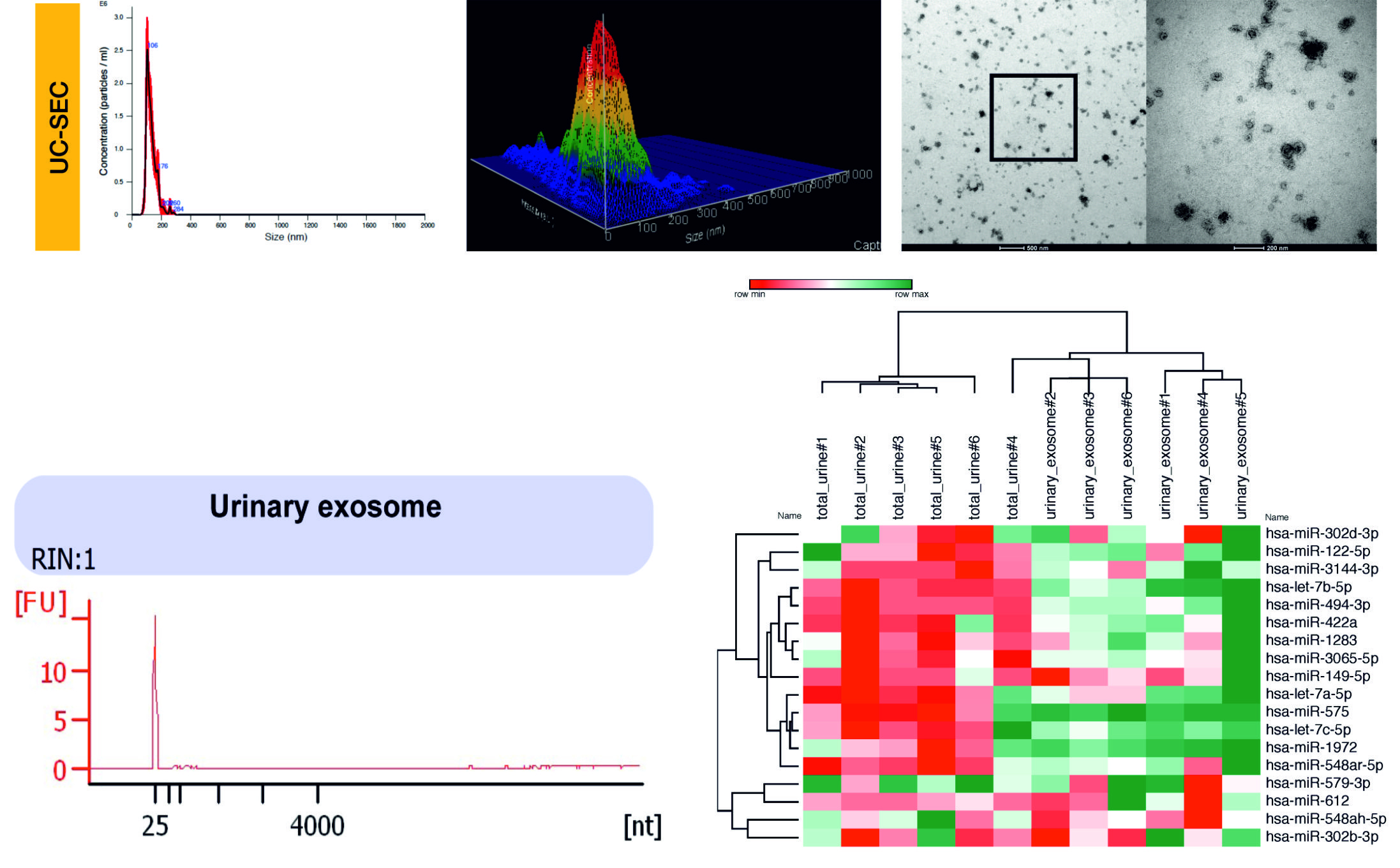
Urinary exosome characterization and miRNA profiling in LUT dysfunction
Bladder outlet obstruction is characterized by an increased outlet resistance leading to an elevated detrusor pressure and decreased urinary flow during voiding. Urodynamic examination remains the gold standard procedure for the diagnosis of obstruction-induced LUTD, but it is an invasive procedure, associated with risks of haematuria and urinary tract infection... Read More
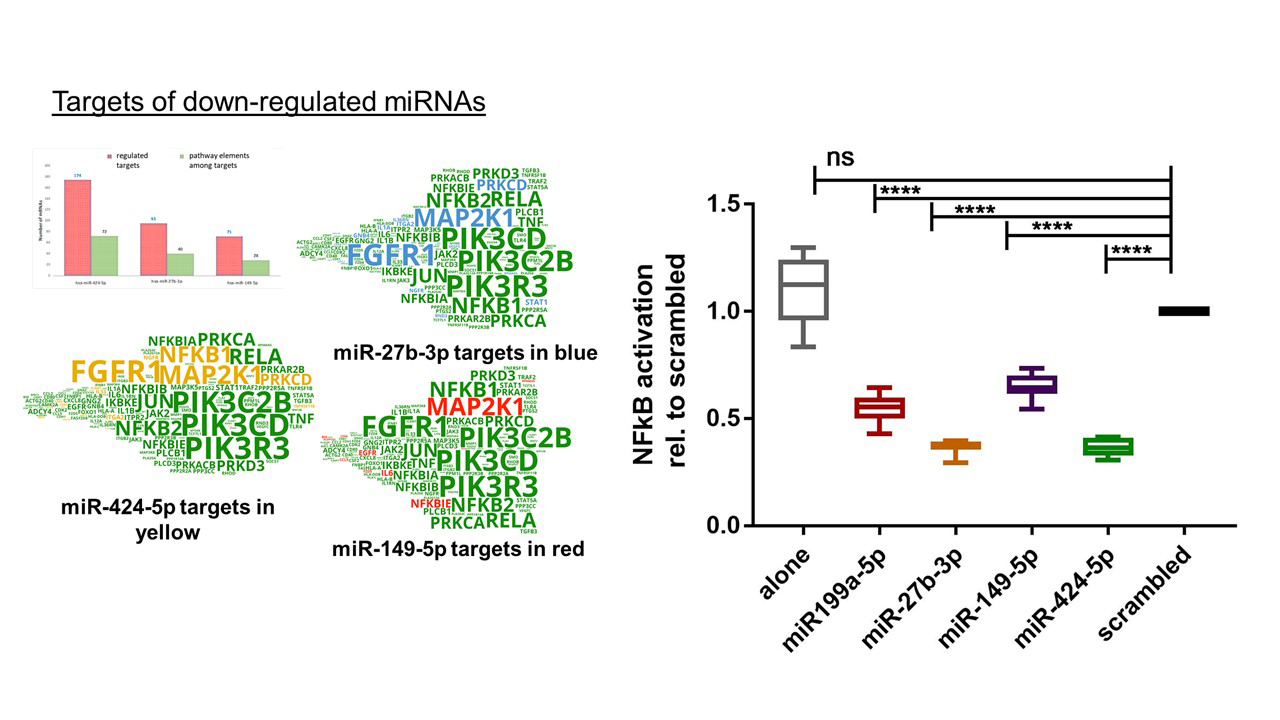
Regulatory potential of miRNAs to mitigate the TNF-alpha-induced bladder dysfunction
Our comprehensive transcriptome analysis showed that TNF-α signalling contributes to the loss of contractility during Benign Prostatic Obstruction (BPO). We hypothesised that a compensatory up-regulation of miRNAs, targeting important hubs of TNF-α signalling pathways might mitigate this process in order to prevent bladder decompensation... Read More
Grants
2018-ongoing
Novartis Foundation for medical-biological Research “Targeting pro-inflammatory bladder macrophages in benign prostatic obstruction”2019-ongoing
Wings for Life – Spinal Cord Research Foundation “The leukotriene system as a pleiotropic target to promote spinal cord and urinary bladder structural and functional regeneration after SCI”2019-ongoing
Swiss National Science Foundation SNF (Grant Nr 320000-111778) “Mediators of neurogenic inflammation in the urinary tract as key factors in the chronic pelvic pain syndrome / interstitial cystitis and bladder dysfunction.2006-2010
Swiss National Science Foundation SNF (Grant Nr 320030_135783/1) “The role of microRNA in organ remodelling in lower urinary tract dysfunction.”2011-2014
2015-2018
Swiss National Science Foundation SNF R’Equip Grant (316030_164097/1) Total 73’147 CHF and University of Bern Medical Faculty Resource Committee Grant of 75’000 CHF for “Nanoparticle Tracking Analysis using NanoSight NS300 instrument”2015
Velux Foundation (Grant Nr 895) “Diagnostic and therapeutic potential of microRNAs for prevention of bladder outlet obstruction-induced irreversible changes in bladder function in elderly men”2014-2018
Publications
20th December 2018
Koeck I., Hashemi Gheinani A., Baumgartner U., Vassella E., Bruggmann R., Burkhard F.C., Monastyrskaya K*. (2018) TNF- initiates miRNA-mRNA signaling cascades in obstruction-induced bladder dysfunction. Am J Pathol. Aug;188(8):1847-1864. doi: 10.1016/j.ajpath.2018.05.008. Epub 2018 Jun 18. PMID: 29920227August 2018
Baumgartner U., Berger F., Hashemi Gheinani A., Burgener SS., Monastyrskaya K., Vassella E. (2018) miR-19b enhances proliferation and apoptosis resistance via the EGFR signaling pathway by targeting PP2A and BIM in non-small cell lung cancer. Mol Cancer 19;17(1):44. doi: 10.1186/s12943-018-0781-5. PMID: 2945564419th February 2018
Monastyrskaya K*. (2018) Functional Association between Regulatory RNAs and the Annexins. Int J Mol Sci. 16;19(2). pii: E591. doi: 10.3390/ijms1902059116th February 2018
Gheinani AH., Vögeli M., Baumgartner U, Vassella E., Draeger A., Burkhard FC., Monastyrskaya K*. (2018) Improved isolation strategies to increase the yield and purity of human urinary exosomes for biomarker discovery. Sci Rep. 2;8(1):3945. doi: 10.1038/s41598-018-22142-x. PMID: 295004432nd March 2018
Monastyrskaya K*., Burkhard F.C. (2017) Urinary Biomarkers for Bladder Outlet Obstruction. Curr Bladder Dysfunct Rep. doi: 10.1007/s11884-017-0418-328th March 2017
Vasquez E., Cristofaro V., Lukianov S., Burkhard F.C., Gheinani A.H., Monastyrskaya K., Bielenberg D.R., Sullivan M.P., Adam R.M. (2017) Deletion of neuropilin 2 enhances detrusor contractility following bladder outlet obstruction. JCI Insight 2(3):e90617. doi: 10.1172/jci.insight.906179th February 2017
Gheinani A.H., Kiss B., Moltzahn F., Keller I., Bruggmann R., Rehrauer H., Fournier C.A., Burkhard F.C., Monastyrskaya K*. (2017) Characterization of miRNA-regulated networks, hubs of signaling, and biomarkers in obstruction-induced bladder dysfunction. JCI Insight 2(2):e89560. doi: 10.1172/jci.insight.8956026th January 2017
Koeck I., Burkhard F.C., Monastyrskaya K*. (2016) Activation of common signaling pathways during remodeling of the heart and the bladder. Biochem Pharmacol. 15;102:7-1915th February 2016
13th March 2015
Hashemi Gheinani, A., Burkhard F.C., Monastyrskaya K*. (2013) Deciphering microRNA code in pain and inflammation – lessons from Bladder Pain Syndrome. Cell. Mol. Life Sci., 70(20): 3773-895th March 2013
Monastyrskaya K*., Sanchez-Freire V., Hashemi Gheinani, A., Klumpp, D.J., Babiychuk E.B., Draeger A., Burkhard F.C. (2013) miR-199a-5p regulates urothelial permeability and may play a role in bladder pain syndrome. Am. J. Pathol. 182(2):431-48Fabruary 2013
Monastyrskaya, K*., Burkhard, F.C. (2011) Annexins in lower urinary tract: more than just a marker. Leading Opinions 3, 18-212011
Sánchez-Freire, V., Blanchard, M., Burkhard, F.C., Kessler, T.M., Kellenberger, S., and Monastyrskaya, K*. (2011) Acid-sensing channels in human bladder: expression, function and alterations during bladder pain syndrome. J. Urol. 186(4):1509-161st October 2011
Sanchez-Freire, V., Burkhard, F.C., Schmitz, A., Kessler, T.M., and Monastyrskaya, K*. (2011) The structural differences between the bladder dome and trigone revealed my mRNA expression analysis of cold cut biopsies. BJU Int, 108 (2 Pt 2):E126-3518th January 2011
Monastyrskaya, K., Burkhard, F.C. (2010) Leaky urothelium in BPS/IC: myth or reality – molecular insights into disease pathogenesis. Eur. Urology Today, 22-5, 62010
Sanchez-Freire, V., Burkhard, F.C., Kessler, T.M., Kuhn, A., Draeger A., and Monastyrskaya, K*. (2010) MicroRNAs may mediate the down-regulation of neurokinin-1 receptor in chronic bladder pain syndrome. Am. J. Pathol., 176, 288-3031st January 2010
Burkhard, F.C., Monastyrskaya, K., Studer, U.E., and Draeger, A. (2005) Smooth muscle membrane organization in the normal and dysfunctional human urinary bladder: A structural analysis. Neurourol. Urodyn. 24(2):128-1352nd Fabruary 2005
